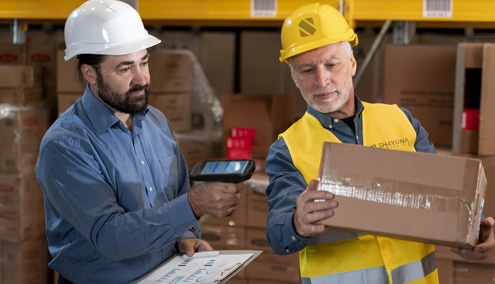The logistics industry, often described as the backbone of global trade, faces an unprecedented challenge: labour shortages. These shortages impact every link in the supply chain, from warehousing to transportation, creating significant disruptions. However, third-party logistics providers, such as 3PL Logistics in Melbourne, use innovative solutions to navigate this challenge. Melbourne is a major logistics hub, so the demand for adaptable and efficient 3PL services is higher than ever.
In this blog, we’ll explore 3PL providers’ strategies to overcome labour shortages and how businesses can benefit from their ingenuity.
The Impact of Labor Shortages on Logistics
Labour shortages have emerged due to several factors, including:
- Aging Workforce: A significant portion of the logistics workforce is nearing retirement age, leaving gaps that are hard to fill.
- Pandemic Aftermath: COVID-19 reshaped the job market, with many workers reconsidering career paths or leaving the industry altogether.
- Increased Demand: E-commerce has led to a surge in demand for logistics services, intensifying workforce requirements.
These challenges are particularly pressing for logistics providers, especially 3PL Logistics in Melbourne. Melbourne’s growing economy and its role as a distribution centre for businesses across Australia make the need for efficient supply chain solutions critical.

Innovative Strategies Employed by 3PLs
1. Leveraging Automation
Automation has become a cornerstone in addressing labour shortages. By integrating advanced technology, 3PL providers reduce dependency on manual labour while improving accuracy and speed.
- Robotics in Warehouses: Automated guided vehicles (AGVs) and robotic picking systems ensure consistent and efficient operations.
- Warehouse Management Systems: These systems streamline inventory management, minimising human errors.
In Melbourne, 3PL Logistics in Melbourne providers invest heavily in automation, ensuring supply chains remain operational even with a reduced workforce.
2. Enhancing Employee Satisfaction
To retain existing workers and attract new talent, 3PLs are focusing on creating better workplace environments. Key initiatives include:
- Flexible Work Schedules: Offering flexibility helps accommodate diverse employee needs, making logistics roles more appealing.
- Training and Development: Upskilling employees ensure they can handle advanced technologies while fostering career growth.
- Employee Wellbeing Programs: Mental health support and wellness initiatives improve job satisfaction and reduce turnover.
These strategies ensure logistics providers can maintain a reliable workforce, even in challenging times.
3. Strengthening Collaboration
Collaboration between 3PL providers, clients, and industry stakeholders has become more critical than ever. By pooling resources and expertise, businesses can effectively address labour shortages.
For instance, 3PL Logistics in Melbourne often collaborates with local businesses to develop tailored solutions that meet specific operational needs. These partnerships enable seamless scalability during peak demand periods and ensure high service levels throughout the year.
The Role of Technology
Predictive Analytics
Data-driven insights allow 3PLs to optimise workforce allocation and anticipate demand fluctuations. Predictive analytics helps providers plan, ensuring they have the right resources at the right time.
Digital Platforms
Sophisticated platforms streamline communication, task allocation, and tracking. These tools enhance operational efficiency and reduce the reliance on manual oversight.
Melbourne’s logistics providers, such as 3PL Logistics, are at the forefront of adopting these technologies, ensuring they stay competitive in a rapidly evolving industry.
Adapting to Evolving Customer Expectations
Today’s customers expect faster delivery, greater transparency, and seamless service. Labour shortages threaten these expectations, but 3PLs are adapting through innovative approaches:
- Micro-Fulfillment Centers: Smaller, strategically located fulfilment centres reduce delivery times.
- Last-Mile Optimization: Using technology to streamline the last leg of delivery ensures customer satisfaction.
By prioritising customer needs, 3PLs continue to deliver value despite workforce challenges.
Conclusion
Labour shortages in logistics are a complex issue, but 3PLs are demonstrating remarkable resilience. They are turning challenges into opportunities through automation, collaboration, and a focus on employee satisfaction.
For businesses, partnering with reliable providers like 3PL Logistics in Melbourne ensures access to cutting-edge solutions that keep operations running smoothly. As the industry adapts, companies that align with innovative 3PLs will thrive in an ever-changing landscape.









